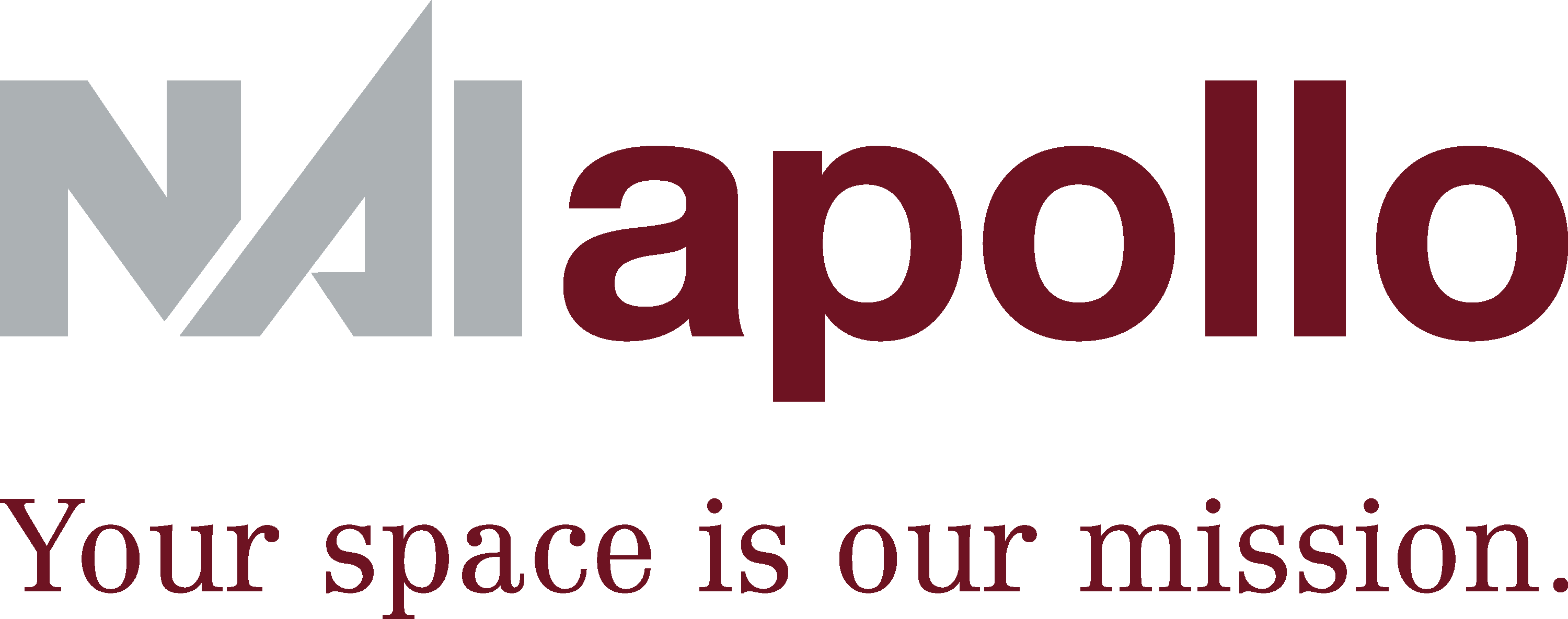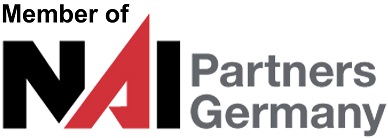NAI apollo: Rhine-Main logistics space market reaches 249,000 sqm in the first half of the year after an upturn in activity
Frankfurt am Main, 15. July 2024 – The market for warehouse and logistics space in the Rhine-Main region saw a marked upturn in the second quarter of 2024. According to NAI apollo, partner of NAI Partners Germany, take-up by tenants and owner-occupiers amounted to 159,900 sqm in the past three months, significantly exceeding both the prior quarter (Q1 2024: 89,100 sqm) and the same quarter of the previous year (Q2 2023: 84,900 sqm). In addition, it almost reached the average for the past five years (Q2 2019 - Q2 2023), which now stands at 164,300 sqm.
For the first six months of 2024, take-up totalled 249,000 sqm, which is the best first-half result since 2021. However, record results like those last seen in 2021 remain out of reach. Although the figure for H1 2024 was almost exactly in line with the five-year average of 249,100 sqm (H1 2019 - H1 2023), it was well below the ten-year average with a decline of around 17.1 %.
“The economic environment remains difficult, but user demand on the Rhine-Main market still exceeds the supply of available warehouse and logistics space. Two factors in particular have contributed significantly to the increase in take-up in recent months. On the one hand, several subletting transactions have been recorded again, also including large deals. Second, the new-building segment has seen significant growth. In particular, deals in or with new-building projects have provided a boost for the segment above 10,000 sqm,” said Michael Weyrauch, Head of Industrial and Logistics at NAI apollo.
New construction projects increase take-up result
In total, more than 124,000 sqm, or almost half of overall take-up, has been generated in the year to date through lettings in new developments and the start of construction on owner-occupier projects. “Such a high level of take-up in new buildings was not recorded in either of the two previous years. The two largest deals of the year by far are also attributable to the new-building segment. These concern an owner-occupier building by DHL in Florstadt and the project development by Bork in Butzbach, which was already announced in the first quarter and involves the construction of a new logistics centre for the Bosch Home Comfort Group,” said Stefan Weyrauch, Co-Head of Industrial and Logistics at NAI apollo. Both projects, which will each provide around 31,000 sqm of warehouse and logistics space respectively, are extensions to existing logistics centres.
Segment above 10,000 sqm dominates
The analysis by size category reveals that premises over 10,000 sqm in size continue to form the strongest space segment with 103,000 sqm (of which 85,000 sqm are in the new-building segment). With take-up almost tripling compared to the previous year, its dominance has increased significantly (market share: 41.4 %). “Growth was also recorded in the two middle-size categories between 3,001 and 5,000 sqm and 5,001 and 10,000 sqm. In total, they accounted for 112,800 sqm in the first half of 2024, more than double the previous year’s figure. By contrast, demand for smaller spaces below 3,000 sqm has declined. Here, combined take-up fell around 43 % to 33,200 sqm,” said Dr Konrad Kanzler, Head of Research at NAI apollo.
Industry and manufacturing remains the strongest user group
The growing significance of companies from the industrial and manufacturing sectors since 2023 has continued to apply in 2024 to date, although this is no longer as pronounced as in the first quarter of the year, when this group accounted for a market share of over 60 %. In the first half of 2024, take-up by industrial and manufacturing companies totalled 99,200 sqm. Compared to the previous year, this represents a more than threefold increase, and also means that this group holds the leading market position with a 39.8 % share. Owing to several major deals, transport, warehousing and logistics companies were also again able to increase take-up, and were ranked second with 96,000 sqm (H1 2023: 53,500 sqm). The retail sector remains cautious, although there has been an improvement in the first half of the year. However, deals above 10,000 sqm were non-existent. As a consequence, retail companies were able to increase their take-up from 5,400 to 28,800 sqm in the last three months, but still fell further behind with a market share of 11.6 %.
Take-up more broadly distributed within the market area
In terms of take-up within the different sub-markets, none of the areas included in the analysis particularly stood out. Market shares achieved in five of the seven sub-markets ranged between 15 % and 25 %. Lower shares were recorded only in the “Frankfurt” city area and the “Wiesbaden/Mainz” sub-market, which comprises these two cities and the neighbouring area to the west. “One key reason for the broader distribution is the increase in take-up of space in or through property developments. Owing to the lack of suitable building sites on which developments can be realised, the potential for space has recently been taken up in various areas primarily on the periphery of the market area or at existing logistics locations,” said Kanzler. As a result, the “North-West” sub-market to the west of the A5 motorway and north of the river Main accounted for the highest proportion of take-up with around 61,500 sqm or a market share of 24.7 % by the end of June. One of the largest deals of the year also took place here, namely the project development by Bork in Butzbach for the Bosch Home Comfort Group.
Demand for space remains high despite the difficult economic conditions
The developments in recent months serve to emphasise the high user demand for warehouse and logistics space in the Rhine-Main region. Despite the continuing economic weakness, new users are quickly found for vacancies that meet current requirements. Recently, the situation has been eased somewhat by various sublet spaces. Above all, however, the increase in new construction has led to a rise in take-up activity. “At the same time, this mostly concerned built-to-suit projects, or new developments that are specifically tailored to a particular user, and space extensions in the immediate vicinity of existing logistics centres. Further comparable projects are under development. On the other hand, there remains a shortage of large, speculative project developments that could improve supply in the near term. In view of the continuing high construction and financing costs, but primarily owing to the lack of suitable building plots, no improvement is in sight here,” said Michael Weyrauch. The prime rent for warehouse and logistics space of 5,000 sqm or more has remained stable at €7.95/sqm. “Compared to the previous year, this represents an increase of 35 cents. A further increase can be expected in the coming months, particularly as a result of the continuing imbalance between supply and demand, so that the €8 threshold should be exceeded in the near future,” added Stefan Weyrauch.
NAI apollo does not expect to see a sharp increase in activity in the coming months. Record take-up levels such as those last seen in 2021, when more than 700,000 sqm was registered, will not be achieved in the near term. For this to happen, a significant increase in demand for space particularly by retailers would be required, in addition to the necessary supply of space. The result for the end of the year is therefore expected to be on a par with the previous year, when take-up of 485,000 sqm was achieved after a stronger second half of the year.

